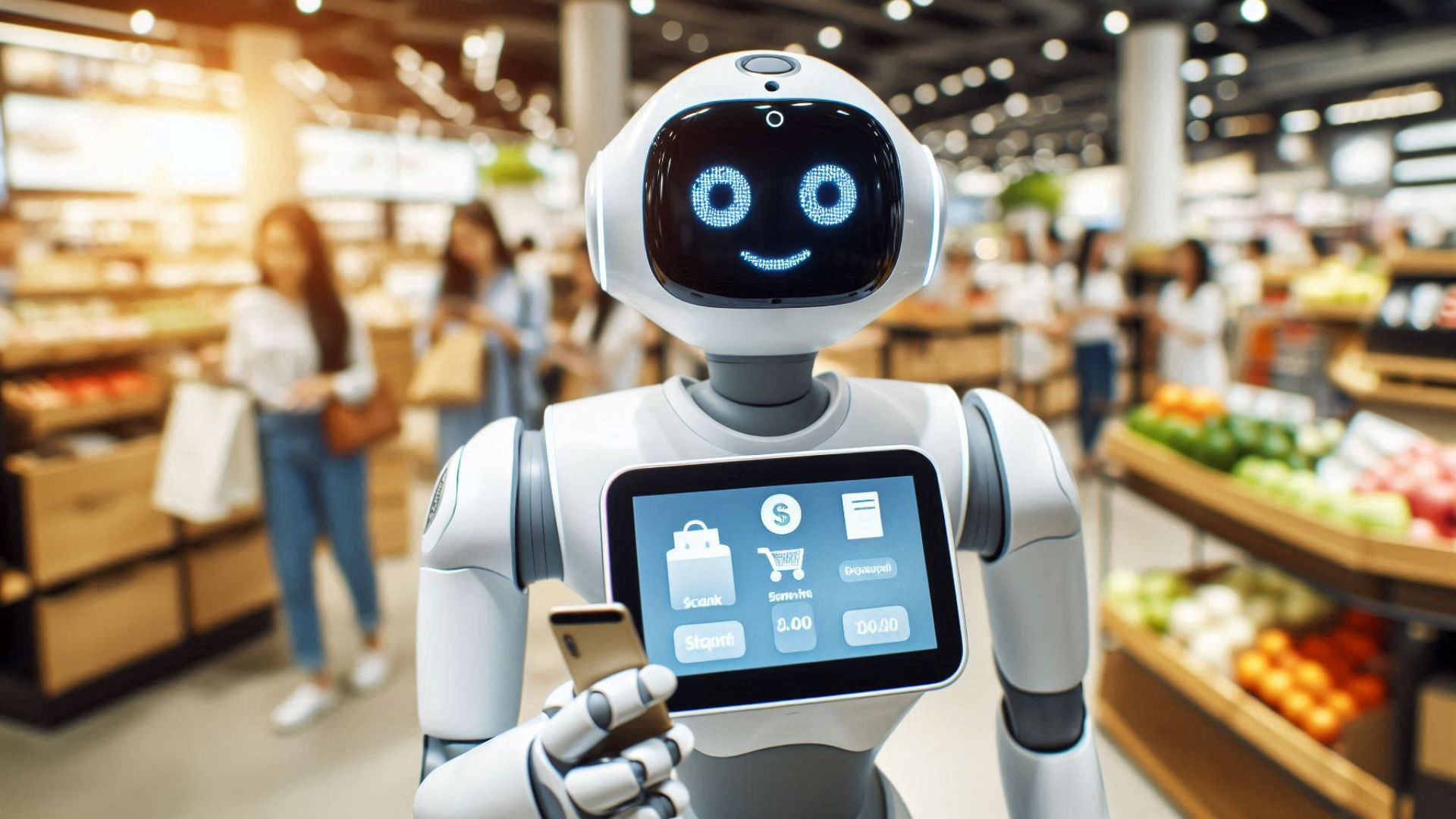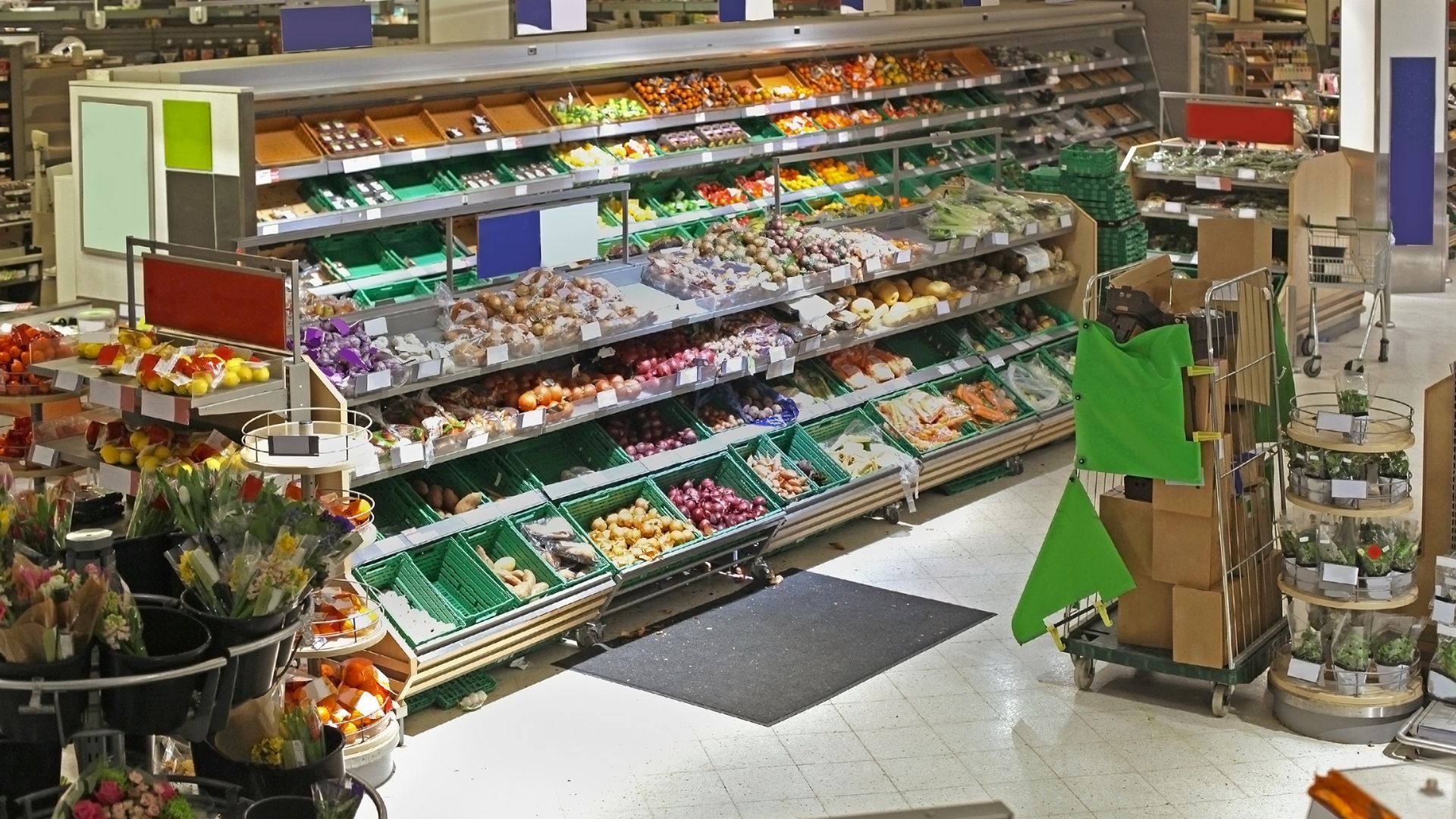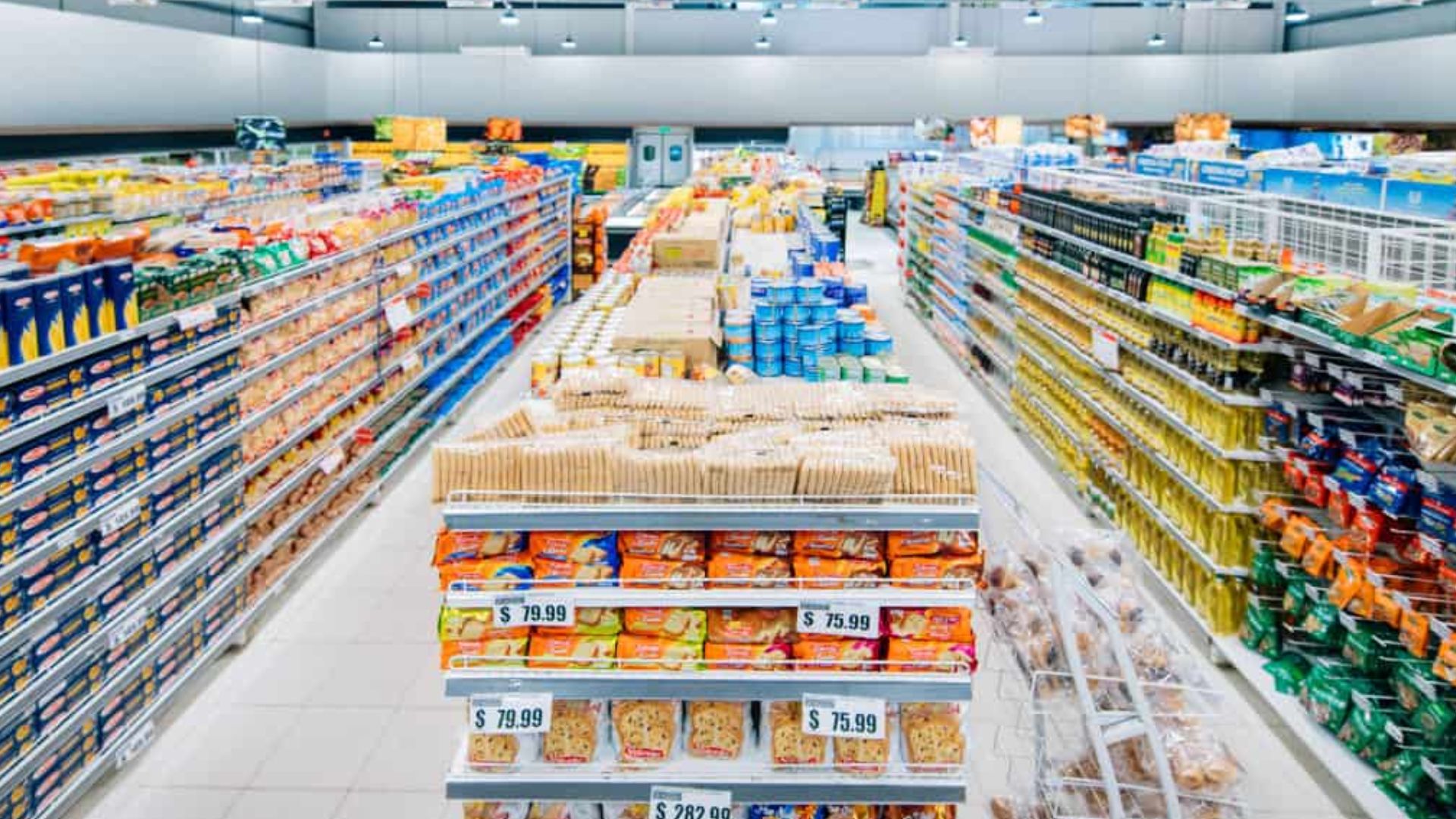Ensuring the right products are perfectly placed and fully stocked is essential in the fierce retail battle for consumer attention. Additionally, pricing must be optimized to convert browsers into buyers. For CPG brands, optimizing what customers actually see on the shelf is crucial to driving sales and gaining market share. Research shows that up to 82% of purchase decisions are made in-store, making shelf presence a decisive factor.
AI and machine learning-powered shelf scanning is transforming the industry. This technology continuously monitors what’s on the shelf using real-time computer vision and intelligent analytics. It ensures that every SKU is visible, correctly placed, fully stocked, and accurately priced.
According to recent industry reports, over 80% of retailers plan to increase investment in AI-driven shelf management solutions over the next two years, underscoring the technology’s growing importance. For CPG brands, this goes beyond simple inventory tracking to true shelf optimization, directly influencing customer choices at the moment of purchase.
In this article, we’ll dive into the core technologies behind AI-ML shelf scanning, its benefits for CPG brands focused on maximizing shelf impact, practical retail applications, and emerging trends that are driving smarter, data-driven shelf management.
Key Takeaways
- AI and machine learning-powered shelf scanning enable real-time, precise monitoring of product placement, stock levels, and pricing accuracy, optimizing what customers see on shelves.
- Accurate shelf data enables CPG brands to enhance planogram compliance, prevent stockouts, and ensure that promotional displays are executed correctly.
- The implementation of continuous shelf insights enables brands to improve inventory management, minimize waste, and respond more quickly to shelf issues, ultimately boosting customer satisfaction.
- Emerging technologies, such as AR, edge computing, and sustainability-focused digital audits, will further transform shelf optimization, making retail execution smarter and more efficient.
What is the Role of AI in Shelf Optimization?
Artificial Intelligence (AI) and Machine Learning (ML) are technologies that enable computers to process data, learn from it, and make intelligent decisions. In retail, AI refers to systems that can analyze visual data and patterns, while ML involves training these systems to enhance accuracy over time through experience.
In shelf optimization, AI-ML technologies such as Computer Vision and Optical Character Recognition (OCR) are particularly valuable. Computer Vision enables AI systems to process images of shelves captured by cameras or mobile devices, identifying product placement, stock levels, and ensuring accurate pricing. OCR enables the real-time reading of price tags and labels, ensuring accurate pricing.
Key Components of AI-ML Shelf Scanning
AI-ML shelf scanning utilizes advanced technologies to deliver accurate, real-time insights into shelf conditions. These components form the backbone of a system that captures detailed visual data and intelligently analyzes it to optimize product placement, stock levels, and pricing. The two main pillars of AI-ML shelf scanning are:
1. Computer Vision for Visual Data Capture
Computer vision technology uses high-resolution cameras and sophisticated image sensors to capture detailed photos or videos of retail shelves. This visual data provides a comprehensive snapshot of what’s on the shelf, including product presence, arrangement, and promotional displays, without relying on manual audits. These images serve as the essential input for further AI processing.
2. Machine Learning Algorithms for Data Analysis
Once the shelf images are collected, machine learning algorithms take over. These algorithms are trained to recognize individual stock-keeping units (SKUs), assess stock quantities, read price tags using optical character recognition (OCR), and detect compliance with planograms or promotional setups. Over time, these models learn from new data, continually improving their accuracy, speed, and ability to identify anomalies such as misplaced items or missing products.
Together, computer vision and machine learning enable near real-time shelf monitoring, empowering CPG brands to manage inventory proactively, correct issues promptly, and boost the overall in-store customer experience.
ParallelDots utilizes advanced deep learning algorithms and computer vision technologies, including On-Device Image Recognition (ODIN) and Optical Character Recognition (OCR), to deliver precise shelf optimization. ShelfWatch provides real-time, high-accuracy product recognition and price display compliance with minimal data requirements, ensuring efficient and cost-effective monitoring. The technology enables CPG brands to track planogram compliance, monitor stock availability, and optimize product placement seamlessly, even in offline modes.
What are the Advantages of AI-ML in Shelf Management?
AI and machine learning technologies bring transformative benefits to shelf management by enhancing accuracy, efficiency, and responsiveness in retail environments. These tools empower CPG brands to maintain optimal shelf conditions and reduce operational costs. The key advantages include:
- Precision in Product Localization and Placement: AI-ML systems accurately identify the exact position of each product on the shelf, ensuring compliance with store layouts and planograms. This level of precision significantly reduces errors common in manual audits.
- Reduction in Errors and Manual Labor: Automated scanning minimizes human oversights, such as missed stockouts or pricing mistakes, while also reducing the time and effort required for manual shelf checks. This frees up staff to focus on higher-value tasks.
- Enhanced Pricing Accuracy: Continuous monitoring ensures that price tags are accurately aligned with their respective products, preventing pricing discrepancies.
- Real-Time On-Shelf Inventory Insights: Ongoing shelf surveillance provides instant updates on stock levels, alerting brands of on-shelf stockouts or overstock situations promptly. This enables quicker restocking decisions and better inventory on-shelf.
Also read: How AI is driving Shelf Space Management and Optimization Strategies
How Does AI-ML Shelf Scanning Improve Planogram Compliance?
Planograms are blueprints for optimal product placement on retail shelves. They help maximize sales and ensure a consistent brand experience across stores. Adhering to these layouts is crucial for CPG brands aiming to ensure that every product is positioned strategically, whether it’s securing high-visibility spots for promotional items or ensuring that top-selling products receive prime shelf space.
Here’s how AI-ML shelf scanning strengthens planogram adherence:
- Accurate Product Identification: Advanced image recognition detects and classifies products to ensure each SKU is placed according to the approved planogram.
- Real-Time Deviation Detection: Automated analysis promptly identifies misplaced products, missing facings, and unauthorized substitutions, enabling immediate corrective action.
- Faster Issue Resolution: Instant insights empower field teams to address shelf errors quickly, minimizing lost sales and preserving the shopper experience.
- Consistent Brand Presentation: Maintaining uniform planogram compliance across all store locations builds customer trust and maximizes promotional impact.
- On-Shelf Stock Availability Monitoring: Continuous tracking of product presence helps avoid stockouts that can break planogram integrity.
- Promotional Display Verification: Ensures all point-of-sale materials and promotional setups are correctly placed and maintained as per plan.
- Price Tag Accuracy: Checks that pricing labels match the products, maintaining shopper confidence and pricing consistency.
- Focused Monitoring of Key Shelf Areas: Tracks compliance for high-visibility zones like end caps and gondolas, which are critical for driving impulse purchases and promotions.
Ultimately, AI-ML shelf scanning transforms planogram compliance from a reactive, labor-intensive task into a proactive, data-driven process. This ensures that shelves always reflect the brand’s strategic merchandising objectives and drive higher sales.
To help CPG brands achieve flawless planogram compliance, ParallelDots offers ShelfWatch, an AI-powered tool that provides real-time visual shelf data and actionable insights. ShelfWatch automates compliance checks across thousands of stores, enabling brands to maintain consistent product placement and improve overall planogram compliance with greater efficiency.
How Does AI and ML Simplify On-shelf, In-store Inventory?
Managing inventory effectively across multiple stores is a complex task that requires precise, real-time insights to avoid stock issues and lost sales. Traditional inventory systems often fall short in capturing what’s actually available on shelves, leading to gaps between supply and shopper demand. AI and ML-powered shelf scanning changes this by providing highly accurate, shelf-level data that helps CPG brands make smarter inventory decisions.
Here’s how AI-ML shelf scanning boosts in-store inventory management:
- Instant Detection of Shelf Gaps: Quickly identifies missing or low-stock products on shelves, enabling timely replenishment.
- Visibility into Product Movement: Tracks how products are picked up or moved by shoppers, helping understand real consumption patterns without infringing on privacy.
- Optimized Stock Distribution: Supports better allocation of inventory across stores by highlighting demand variations at the shelf level.
- Reduction in Overstock and Waste: Prevents overstocking by providing precise inventory status, helping reduce markdowns and spoilage.
- Accurate Compliance Reporting: Verifies that stock levels meet retail agreements and service level standards, ensuring smooth supply chain coordination.
This data-driven approach allows CPG brands to optimize inventory more effectively, ensuring shelves are stocked to meet actual shopper demand and improving overall store performance.
Also read: Retail AI Solutions for Better Share of Shelf Execution
Challenges and Key Considerations When Implementing AI-ML Shelf Scanning
While AI and ML-powered shelf scanning bring powerful advantages, successful implementation requires overcoming several important challenges:
- Ensuring High-Quality Data Capture: Accurate product detection depends on clear, well-lit images, making consistent photo quality critical.
- Meeting Computational Demands: Analyzing vast amounts of visual data in real time calls for a strong IT infrastructure and optimized algorithms.
- Maintaining Privacy Compliance: Solutions must strictly focus on shelf and product data without collecting or processing any customer information to adhere to privacy laws.
- Managing Investment and Expertise Needs: Deploying and maintaining these advanced technologies involves upfront costs and requires skilled teams for ongoing support and optimization.
By carefully addressing these factors with the right approach and expert partners, CPG brands can maximize the value and effectiveness of AI-ML shelf scanning solutions.
Future Potential and Emerging Trends in Shelf Optimization through AI-ML Scanning
Several cutting-edge technologies that build on AI and machine learning capabilities are set to transform the future of shelf optimization. One of the most promising advancements is the integration of Augmented Reality (AR) and Virtual Reality (VR). These immersive technologies will revolutionize how retail teams are trained, offering interactive, hands-on simulations that help staff understand optimal shelf layouts and merchandising strategies more effectively.
Another key development is the rise of edge computing. By processing data locally within the store, edge computing reduces the time delay (latency) between capturing shelf images and analyzing them. This means CPG brands can gain real-time insights more quickly, enabling immediate action on stockouts, misplacements, or pricing issues. Faster decision-making at the store level leads to better shelf conditions and customer satisfaction.
Furthermore, AI-powered predictive analytics is making waves in shelf optimization. By analyzing historical data, product demand patterns, and external factors like weather, festivals, or local events, AI can forecast demand more accurately. This allows brands to anticipate stock needs and optimize product placement before issues arise, further enhancing operational efficiency and sales performance.
CPG brands that proactively adopt these emerging technologies will gain a competitive edge. They will benefit from smarter, more efficient retail execution, improved sales performance, and customer loyalty.
How Does ParallelDots’ Technology Help CPGs in Shelf Optimization?
ParallelDots specializes in AI-powered solutions designed to help CPG brands optimize their shelf management and retail execution. By leveraging advanced computer vision and machine learning technologies, ParallelDots provides real-time, actionable insights into shelf conditions, product placement, and stock availability. These insights enable brands to maintain flawless shelf compliance, maximize product visibility, and boost overall store performance.
Key features of ParallelDots’ shelf optimization solutions for CPG brands include:
- Real-Time Shelf Monitoring: Continuous tracking of product placement and stock levels across thousands of store locations, using ShelfWatch to ensure shelves are always optimized.
- Planogram Compliance Verification: Automated detection of deviations from approved shelf layouts to maintain consistent brand presentation and promotional effectiveness.
- On-Shelf Stock Availability: Accurate detection of stockouts and low inventory to prevent lost sales and enhance customer satisfaction.
- Price Tag Accuracy: Monitoring and verification of price tags to avoid shopper confusion and maintain pricing integrity.
- End Cap and Gondola Compliance: Ensuring high-impact shelf areas are fully utilized to drive impulse purchases and maximize sales.
With these capabilities, ParallelDots empowers CPG brands to transform shelf optimization from a reactive task into a proactive, data-driven strategy, driving better retail execution and stronger business outcomes.
Conclusion
Shelf optimization is a continuous, data-driven process powered by AI and machine learning. For CPG brands, this means gaining precise visibility into what shoppers actually see on shelves, ensuring products are always correctly placed, fully stocked, and priced accurately to drive sales and customer satisfaction. By overcoming traditional challenges and embracing AI-ML shelf scanning, brands can achieve operational excellence and stronger retail performance.
ParallelDots stands out as a trusted partner for CPG brands seeking to unlock the full potential of shelf optimization. With advanced computer vision and machine learning technologies, ParallelDots delivers real-time, actionable insights that streamline shelf monitoring, enforce planogram compliance, and optimize on-shelf inventory across thousands of stores.
Book a demo with ParallelDots today to discover how AI-powered shelf scanning can elevate your retail performance and keep you ahead in the competitive CPG market.


